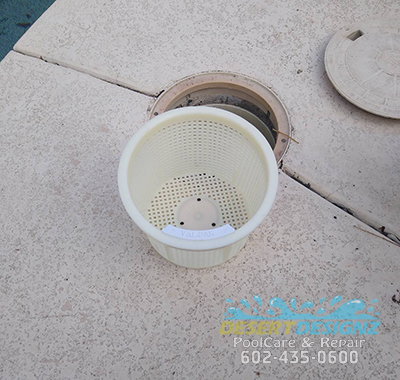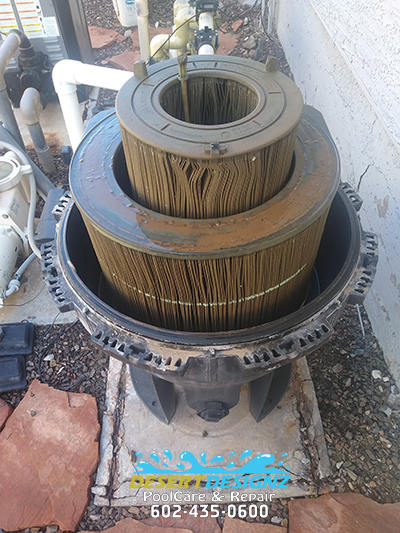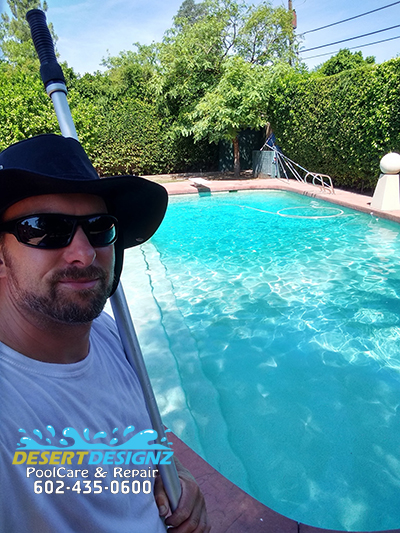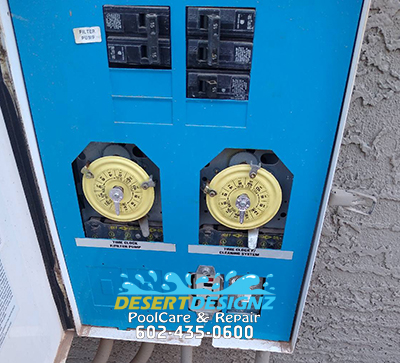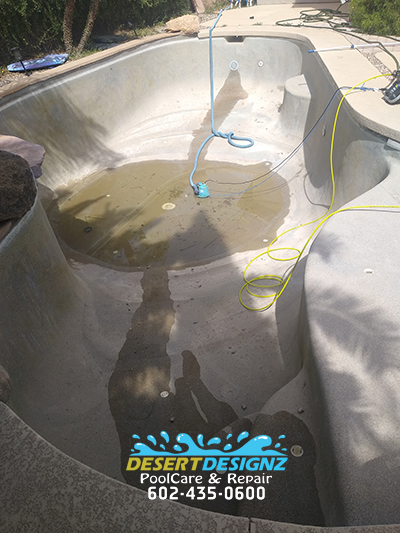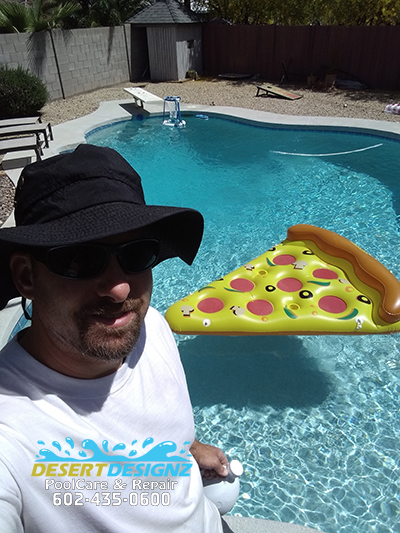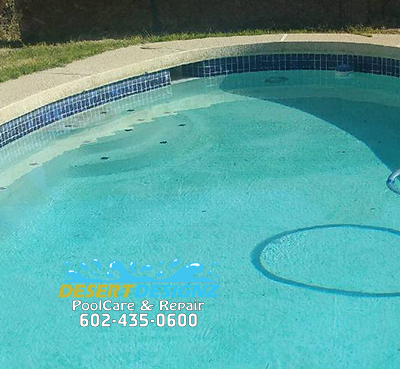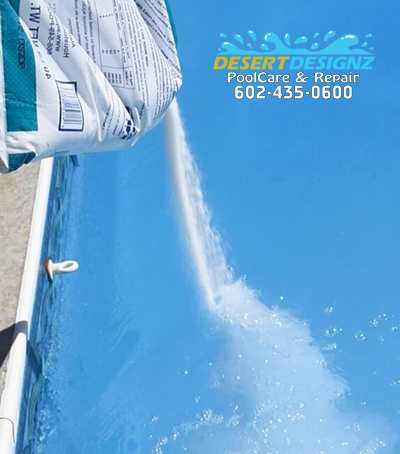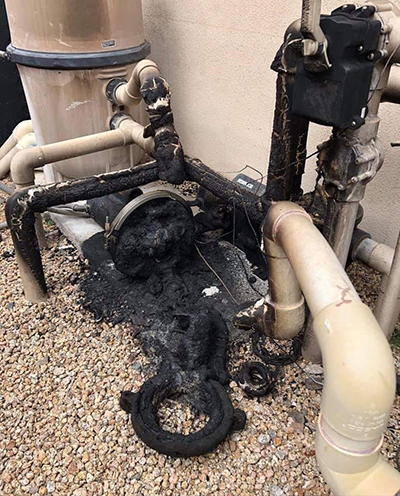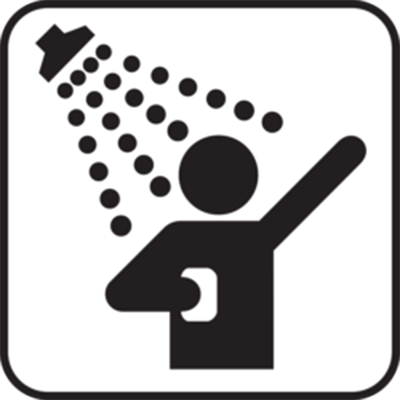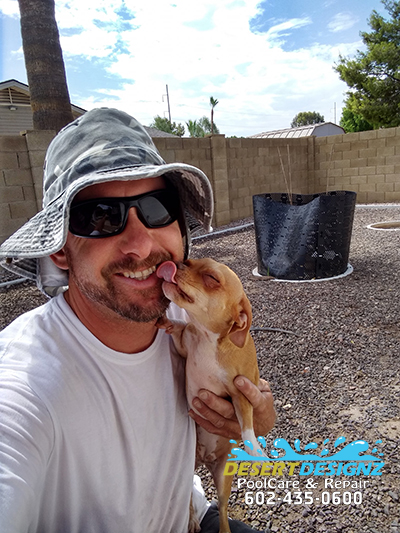Tips for home owner pool care.
1. Empty Baskets
|
|
|
| Empty skimmer, pump and inline baskets after wind storms to prevent basket blow outs, clogs and water restrictions. Low water flow can cause debris build up on tiles and slow moving water makes it easier for algae to grow.
|
|
2. Filter cleaning
|
|
|
| For pools with diatomaceous earth (DE) filters or cartridge filter, the manufacture recommends having the filter disassembled, cleaned, inspected and reassembled every 6 months. More if your pool has a lot of debris from trees, dogs or dirt such as properties near golf courses or open desert. Proper filter maintenance will prolong the life of your equipment and ensure the pools filtration is the best it can be and reduces the risk of algae or bacteria blooms.
|
|
3. Landscaping
|
|
|
| Keep trees and bushes trimmed neatly and grass cut short and often. Foliage is one of the biggest sources for phosphates which can cloud your water and feeds algae. Debris from trees and bushes can clog equipment and restrict water flow. Chlorine levels will be effected due to the sanitizer working to break down the foliage from the leafs rather than breaking down algae and bacteria cells.
|
|
4. Filter run time
|
|
|
| During the hot summer months, filter run time should be no less than 8hours a day. Some pools with more debris and phosphates should run longer. During the winter months a 4 hour run time is recommended. Water movement is a key factor in algae and bacteria blooms. It's much more difficult for algae to attach to the pores of the finish or tiles if water is moving. Algae grows much faster in warmer water.
|
|
5. Drain and fill
|
|
|
| Every 5 years or so a pool will need to be drained due to the buildup of cyanuric acid. Cyanuric acid is added to a pool when first filled and doesn't filter out or evaporate out. The only way to remove it is to drain the pool. Cyanuric acid is known as a stabilizer for the chlorine in swimming pools exposed to sunlight. It helps reduce the chlorine loss by protecting the free chlorine in the pool from the sun's ultraviolet rays. Without it, chlorine would evaporate out to quickly but if too much is in the pool (over 250ppm) the chlorine is unable to sanitize the water properly.
|
|
6. Toys
|
|
|
| Toys are fun while using the pool but should be removed and stored properly when not in use. Leaving floating toys in the pool can block skimmer openings, reducing skimmer function or causing air to get in the system causing the pump to run dry. Sinking toys can get sucked up into vacuums causing equipment damage that will need to be repaired. Small toys can get stuck in underground pipes that would require a special line unclogging using pressurized air to remove the clog.
|
|
7. Proper water level
|
|
|
| Keeping the water level in the pool at the correct height allows the skimmer to operate correctly. If the water is too high, the suction won't be powerful enough to pull in floating debris. If the water level is too high, water could leak out under the pool deck or tiles causing major repair issues later in the pools life. If water level is to low, the skimmer could start sucking air and cause pump damage. Some pools have an automatic water filler but for those who don't, there are over the deck options either plastic or metals. The metal versions tend to last a lot longer and can take a beating when swimmers are jumping in the pool. Contact us for current prices and options.
|
|
8. Adding chemicals
|
|
|
| It's important to know not only what you're putting into your pool but how much. If you decide to add any chemicals to you pool in-between service visits please consult your pool technician first. Some chemicals should not be added together. Your technician adds chemicals based on a weekly schedule. When they arrive to check chemicals, they will add the necessary chemicals to bring the pool back into balance. If you add chemicals without their knowledge they may believe there is another issue or may add extra chemicals which could pose a problem to the pool water or swimmers health.
|
|
9. Storing chemicals
|
|
|
| NEVER mix pool chemicals of any kind. Pool chemicals are a mixture of acids and bases. In almost any combination the results could be deadly. Even chemicals that look the same like dry powders. Never put bags of shock in chlorine buckets. Never store liquids above other chemicals in case of leaks. Liquid containers should be discarded every year to prevent brittle decomposition. Never add chemicals to the pool at the same time. Do not put chlorine tabs in the skimmer basket as the release of chlorine erodes the skimmer well and metals in the pump motor. |
|
10. Shower before swimming
|
|
|
| Rinsing off before swimming removed sweat, oils, sun block from your skin which adds to higher phosphate levels. If you notice multi colored spots on the water surface, that's oils from your body and hair. High swimmer loads cause the chlorine to work harder to break down oils to be filtered out later. If you're planning a swimming party or recently had one, shocking the pool will help break down the bioload waste and sanitize the water.
|
|
11. Dogs
|
|
|
| Dogs are humans best friend but dog hair and pools do not mix well. Dog hair clogs up baskets and absorb chlorine as it tries to break down the hair. It also adds phosphates which could cause water to become cloudy or green. If your dog loves to swim, please limit the amount of times the dog swims and make an effort to remove any dog hair from the surface and baskets. Run the filter a few hours to remove dog hair and check for clogged impellers after the filter has run for 24 hours. Dog hair can clog equipment and filters causing filter maintenance more often. |
|
|





